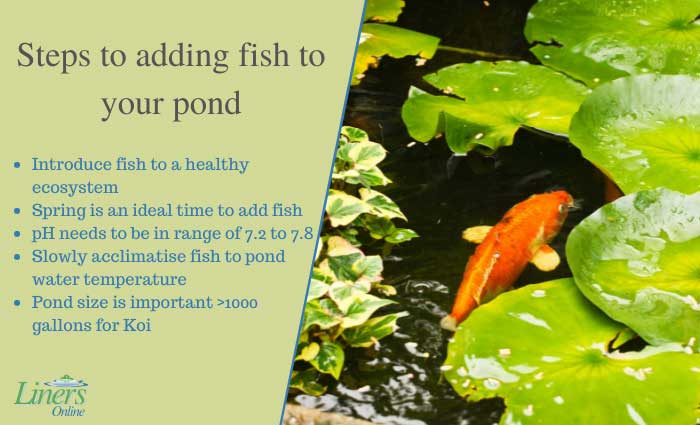
The number of ponds that have been built during these unprecedented times is just so exciting. Ponds not only add aesthetic value to your garden, but they are of great importance to wildlife. Most importantly, though is the reward of accomplishing a successful pond build and successfully adding fish to a healthy ecosystem. After which, you can sit back and enjoy all that your pond has to offer.
If you have built your pond for the purpose of homing fish, there are things to consider first. The best advise is to exercise a little patience, the result of which will be happy goldfish or Koi and a thriving pond.
Spring is the ideal time to introduce fish to your garden pond.
Steps to take before adding fish
- Establish a safe aquatic environment first. A healthy ecosystem is critical to the survival of your fish.
- Add a filter and pond pump to your water feature
- Check pH which needs to be maintained between a range of 7.2 to a maximum of 7.8
- Make sure the water temperature is around 60 degrees Fahrenheit before introducing your goldfish or Koi
- Take care when transporting fish from place of purchase to pond location. Avoid direct sunlight onto the bag/s carrying your new pets
Introducing fish to a garden pond needs to be a slow process to avoid stress. A temperature variation between pond water and the water inside the bag they have been transported in needs to minimised. The best way to achieve this is to slowly add small amounts of pond water to the bag. Or, float the bag on the surface of pond for a half hour to an hour so fish can slowly acclimatise. Either method works provided you avoid fish being exposed to direct sunlight.
Size of pond matters too, especially if you are going to home Koi. They typically need at least 1000 gallons of water and depth of pond needs to be no less than 3 feet deep. It is also wise to net your pond to deter unwanted predators visiting your pond for a ‘free meal’.
We hope these simple, but practical tips are useful in a successful introduction of to your garden pond.





